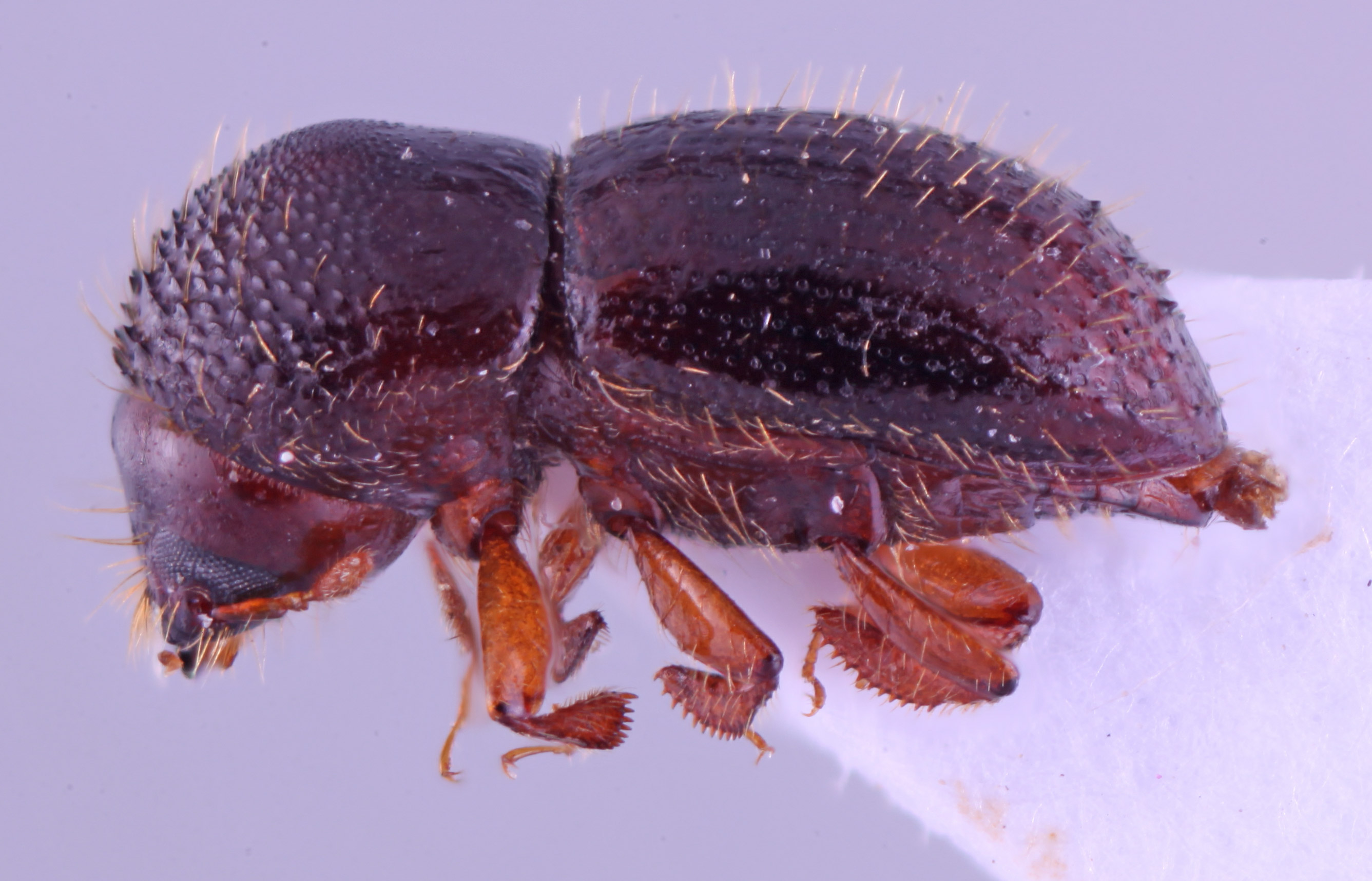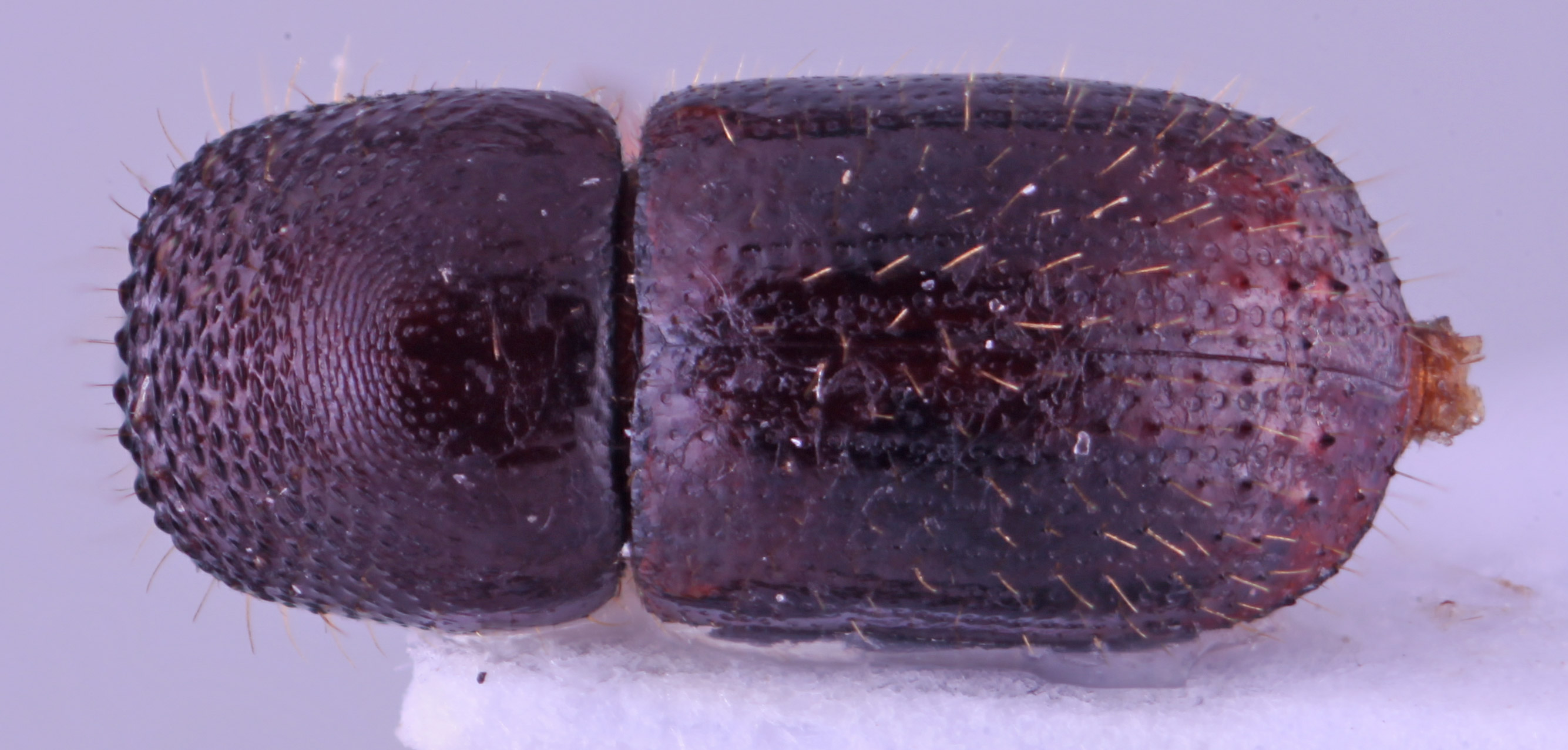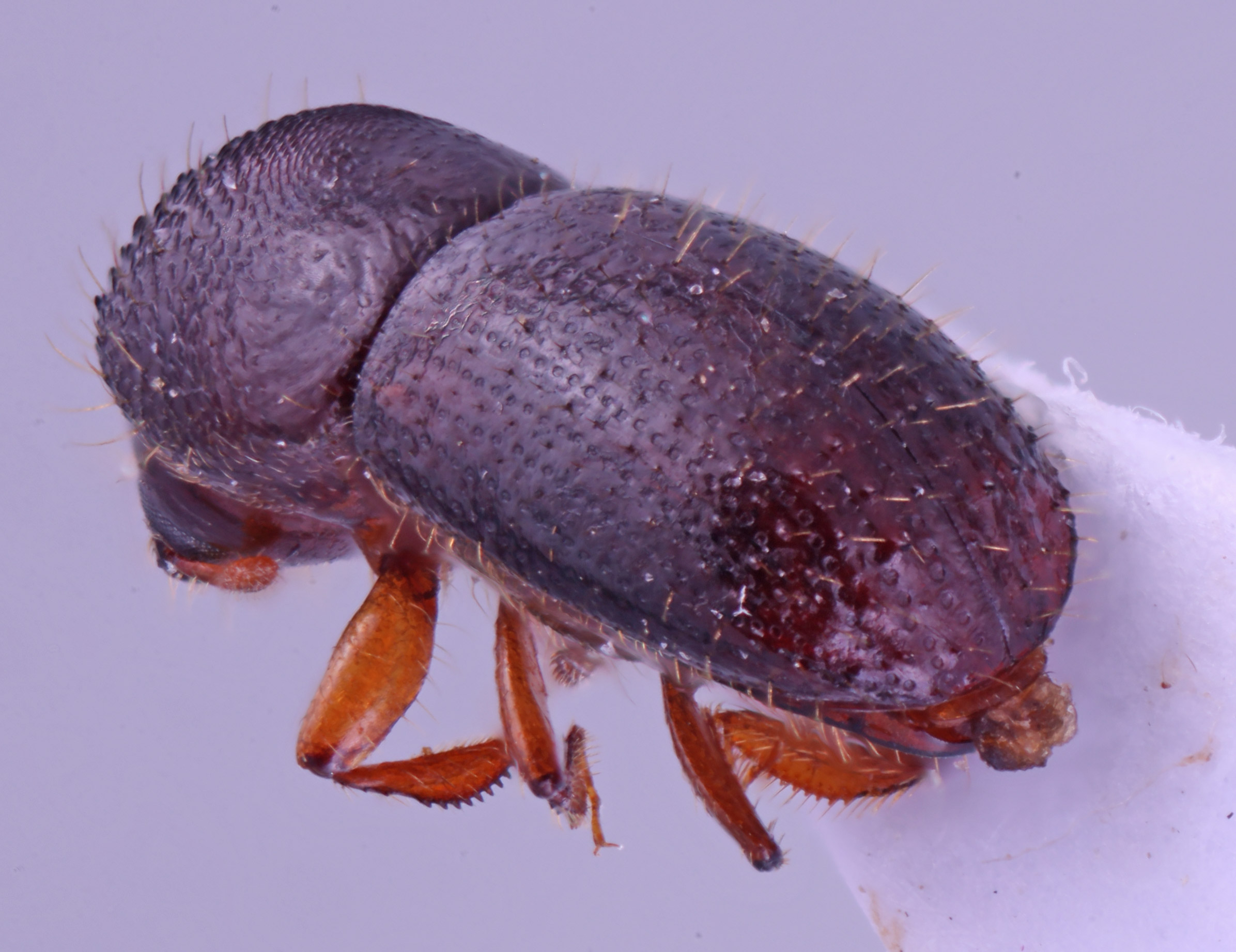Euwallacea testudinatus
|
Euwallacea testudinatus holotype lateral; S.M. Smith |
|
Euwallacea testudinatus holotype dorsal; S.M. Smith |
|
Euwallacea testudinatus holotype declivity; S.M. Smith |
|
Euwallacea testudinatus holotype frontal; S.M. Smith |
Taxonomic history
Euwallacea testudinatus Smith, Beaver & Cognato 2020 (in Smith et al. 2020bSmith et al. 2020b:
Smith SM, Beaver RA, and Cognato AI. 2020b. A monograph of the Xyleborini (Coleoptera, Curculionidae, Scolytinae) of the Indochinese Peninsula (except Malaysia) and China. ZooKeys 983: 1-442. https://doi.org/10.3897/zookeys.983.52630): 258.
Diagnosis
2.8–2.9 mm long (mean = 2.86 mm; n = 5); 2.24–2.33 times as long as wide. This species is distinguished by the pronotumpronotum:
the dorsal surface of the thorax
subquadrate (near type 3) in dorsaldorsal:
of or relating to the upper surface; opposite of ventral
 view, but only 0.89‒0.97 times longer than wide, and more strongly truncatetruncate:
view, but only 0.89‒0.97 times longer than wide, and more strongly truncatetruncate:
appearing cut off or suddenly shortened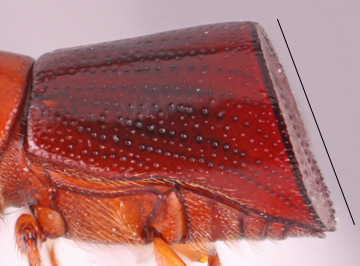 anteriorly; elytraelytron:
anteriorly; elytraelytron:
the two sclerotized forewings of beetles that protect and cover the flight wings
with a weak basalbase:
point or edge closest to the body; opposite of apex carina, sides parallel in basalbase:
carina, sides parallel in basalbase:
point or edge closest to the body; opposite of apex two-thirds, then gradually incurved to broadly rounded apexapex:
two-thirds, then gradually incurved to broadly rounded apexapex:
point or edge furthest from the body; opposite of base
 ; declivitydeclivity:
; declivitydeclivity:
downward slope of either the pronotum or elytra
 beginning after basalbase:
beginning after basalbase:
point or edge closest to the body; opposite of apex quarter, convexconvex:
quarter, convexconvex:
appearing rounded , weakly flattened across interstriaeinterstria:
, weakly flattened across interstriaeinterstria:
longitudinal spaces along the elytra between the striae, which is not as<br />
impressed and bear smaller punctures.
 1‒2 in apicalapex:
1‒2 in apicalapex:
point or edge furthest from the body; opposite of base
 quarter, declivitaldeclivital:
quarter, declivitaldeclivital:
pertaining to the elytral declivity
strial punctures shallow, very coarse, striaestria:
punctures in rows, which may or may not be impressed to make grooves 2 very weakly impressedimpressed:
2 very weakly impressedimpressed:
a depression in a surface
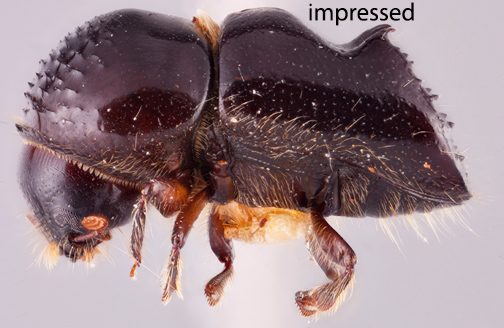 , interstriaeinterstria:
, interstriaeinterstria:
longitudinal spaces along the elytra between the striae, which is not as<br />
impressed and bear smaller punctures.
 granulategranulate:
granulategranulate:
pertaining to a coarse, grainy surface texture
 , interstriaeinterstria:
, interstriaeinterstria:
longitudinal spaces along the elytra between the striae, which is not as<br />
impressed and bear smaller punctures.
 2 with 2 or 3 larger denticlesdenticle:
2 with 2 or 3 larger denticlesdenticle:
a small tooth, the sides of which are equal and the tip is above the middle of the base in apicalapex:
in apicalapex:
point or edge furthest from the body; opposite of base
 quarter, posterolateralposterolateral:
quarter, posterolateralposterolateral:
relating to end of the side part/portion
 margin of declivitydeclivity:
margin of declivitydeclivity:
downward slope of either the pronotum or elytra
 carinate, never granulategranulate:
carinate, never granulategranulate:
pertaining to a coarse, grainy surface texture
 ; and protibiaprotibia:
; and protibiaprotibia:
tibia of the first pair of legs
with 9‒11 socketed denticlesdenticle:
a small tooth, the sides of which are equal and the tip is above the middle of the base .
.
May be confused with
Euwallacea fornicatus species complex (E. fornicatior, E. fornicatus, E. kuroshio, E. perbrevis), E. andamanensis, E. geminus, E. malloti, E. neptis, E. semirudis, and E. velatus
Distribution
China (Yunnan)
Host plants
unknown (Smith et al. 2020bSmith et al. 2020b:
Smith SM, Beaver RA, and Cognato AI. 2020b. A monograph of the Xyleborini (Coleoptera, Curculionidae, Scolytinae) of the Indochinese Peninsula (except Malaysia) and China. ZooKeys 983: 1-442. https://doi.org/10.3897/zookeys.983.52630)
DNA data
specimens not available for sequencing

